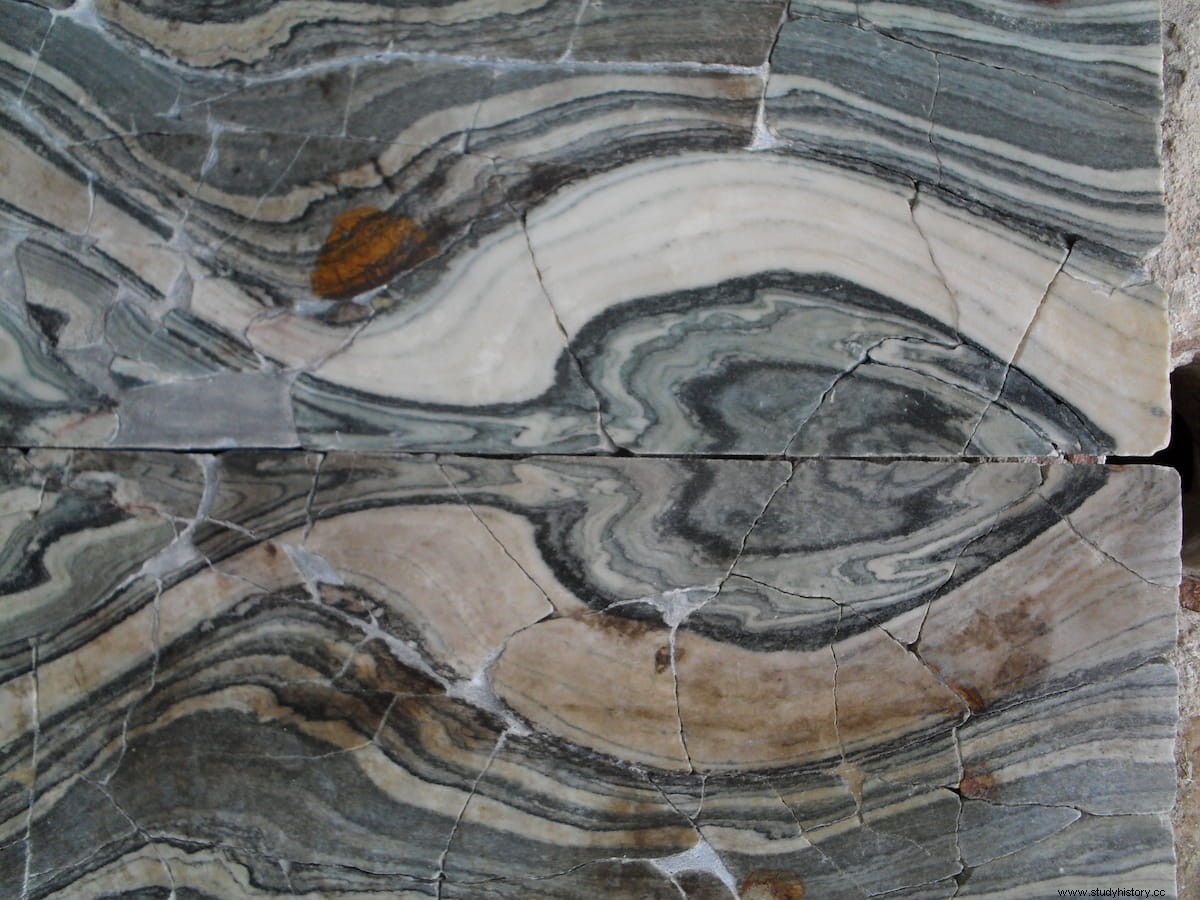When thinking of buildings from the Roman imperial era, images of statues, columns or white marble slabs flash through the minds of many. In fact, many buildings and squares were decorated with marble at that time, but many were not decorated with white marble, but with colored marble, for example the marble of Caristo or cipollino green, which was mined on the Greek island of Euboea.
As marble was very expensive, it was often applied in thin slabs as a facing for other cheaper stones. However, so far no remains of marble workshops from the Roman imperial era have been found, so little is known about marble processing in this period , says Professor Dr. Cees Passchier, from the Institute of Geosciences at the Johannes Gutenberg University of Mainz (JGU).
Together with other scientists from Mainz, as well as from Turkey and Canada, he has now analyzed the marble cladding of a Roman villa from the 2nd century. As the researchers report in the study published in the Journal of Archaeological Science:Reports , used special software for 3D modeling of geological structures. Among other things, they found that material loss during the production of marble slabs may have been less then than it is today.

The researchers examined, photographed and measured 54 cipollino marble slabs. green already restored, about 1.3 square meters each, which had been used to cover the walls of a villa in ancient Ephesus, located on the western coast of Turkey. Based on saw marks found on one of the slabs, they believe that the slabs had been produced with hydraulic metal saws of the type known in later times.
They also reconstructed, from the pattern of the slabs, that 40 of them had been sawn from a single three- to four-ton block of marble and then mounted on the walls in the order they were produced, each in mirror-image pairs. placed one next to the other, creating views in the form of spots.
Finally, the researchers used the software to create a three-dimensional model of the marble block, which in turn allowed them to draw conclusions about material loss during the production of the slabs:The slabs are about 16 inches thick. millimeters and the gaps between them caused by sawing and subsequent polishing are about 8 millimeters. So the material loss caused by the manufacturing process is about a third, which is less than many of today's marble productions Passchier says. This means that the extraction of marble in the Roman imperial period was remarkably efficient .
Investigators also discovered that 42 slabs had been sawn from the original marble block, but two of them had not been fixed to the walls of the room. These slabs were probably broken during subsequent polishing or transportation, indicated by the arrangement of the slabs on the walls of the room Passchier said. That would put the percentage of breakage losses at 5%, which would also be a surprisingly low figure . Based on this small loss, Passchier surmises that the block of marble had been transported to Ephesus and that the slabs had been sawn and polished there.
